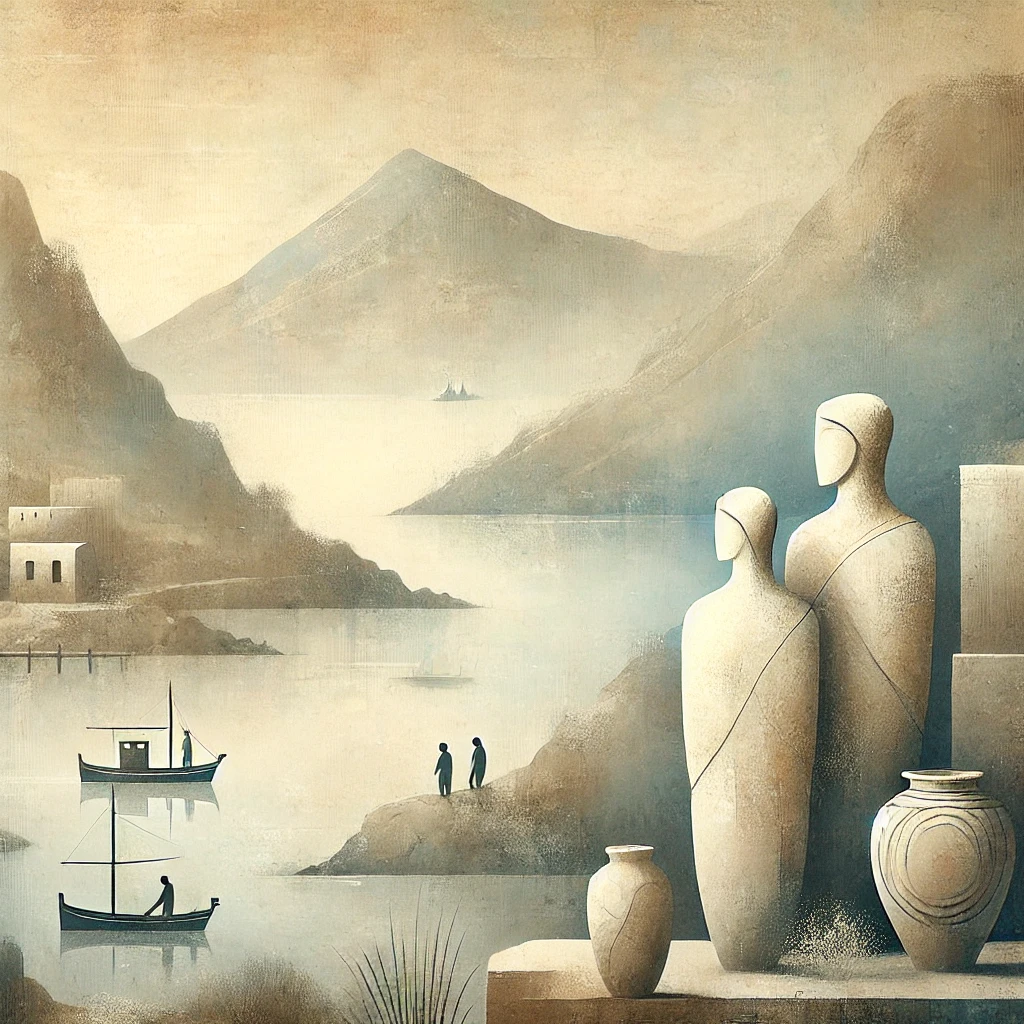The Minoan civilization, one of the most ancient Aegean civilizations, flourished on the island of Crete during the Bronze Age. Renowned for its advanced architecture, intricate art, and vibrant culture, this civilization set the foundation for future Greek societies. Through groundbreaking archaeological discoveries, researchers have been able to piece together the daily lives, religious practices, and socio-political structures of the Minoans. Moreover, the lasting influences and legacy of the Minoan civilization are evident in various aspects of modern civilization, making it a pivotal subject of study in ancient history.
The Minoan Civilization: An Overview
When examining the most ancient Aegean civilizations, the Minoan civilization stands out as a fascinating subject of study. Flourishing on the island of Crete around 2000-1450 BCE, the Minoans are renowned for their advanced society, artistic achievements, and extensive trade networks.
Key aspects of the Minoan civilization include:
- Advanced Architecture: Minoans constructed complex, multi-story buildings, often referred to as palaces. The Palace of Knossos is among the most famous, showcasing advanced engineering and vibrant frescoes.
- Sophisticated Art: The civilization produced exquisite pottery, frescoes, and jewelry, reflecting their rich cultural pursuits.
- Extensive Trade: They established trade connections across the Aegean Sea, facilitating cultural exchange and economic prosperity.
In comparison to other ancient Aegean civilizations, the Minoans exhibited unique advancements in architecture and the arts. Their influence extended to neighboring cultures, making them a critical player in the tapestry of ancient history. Thus, when discussing the most ancient Aegean civilizations, the Minoans undoubtedly deserve recognition for their innovative and influential contributions.
Key Archaeological Discoveries
The Minoan civilization, a contender for the most ancient Aegean civilizations, is renowned for its remarkable archaeological discoveries. These findings reveal much about their advanced society and stunning achievements.
Some key archaeological discoveries include:
- Palace of Knossos: The largest Bronze Age archaeological site on Crete, Knossos provides profound insights into Minoan architecture, art, and culture.
- Frescoes and Wall Paintings: Discovered at various sites, these colorful artworks depict daily life, religious practices, and the natural world.
- Linear A Script: This undeciphered script found in various locations offers clues about the Minoan language and administrative practices.
- Phaistos Disc: A unique clay disc inscribed with symbols that remain a mystery, reflecting the complexity and creativity of Minoan society.
| Discovery | Highlight |
|---|---|
| Palace of Knossos | Largest and oldest Minoan palace |
| Frescoes | Depictions of Minoan life and beliefs |
| Linear A Script | Undeciphered, sheds light on language |
| Phaistos Disc | Unique, mysterious inscribed object |
These discoveries collectively showcase the sophistication and lasting influence of one of the most ancient Aegean civilizations. They continue to captivate archaeologists and historians, offering a window into a civilization that set the foundation for future cultures in the region.
Influences and Legacy of the Minoan Civilization
The Minoan civilization stands as one of the most ancient Aegean civilizations, leaving a profound impact on subsequent cultures. This civilization, primarily based on the island of Crete, exhibited remarkable advancements in several areas:
- Art and Architecture: The Minoans influenced Aegean art and architecture with their intricate frescoes, complex palatial structures, and vivid use of color. Their artistry is evident in the famous Palace of Knossos.
- Trade and Commerce: As skilled traders, the Minoans established extensive trade networks across the Mediterranean. These networks facilitated cultural and technological exchanges with other ancient Aegean civilizations.
- Military and Governance: Their development of a centralized administration and advanced military strategies set precedents for later Greek polities.
Table: Comparative Influences
| Area | Minoan Civilization | Later Greek Civilizations |
|---|---|---|
| Art | Frescoes, pottery, jewelry | Classical sculptures, painted pottery |
| Architecture | Palaces (Knossos) | Temples (Parthenon) |
| Trade | Mediterranean-wide trade | Expanded trade networks |
| Governance | Centralized bureaucracy | City-state (Polis) systems |
By shaping various aspects of social, economic, and political life, the Minoans laid foundational elements that influenced the trajectory of Greek civilization and culture, ensuring their legacy endured through millennia.
Frequently Asked Questions
What is considered the most ancient Aegean civilization?
The Minoan civilization is widely regarded as the most ancient Aegean civilization. Flourishing on the island of Crete, the Minoans are known for their advanced architecture, intricate frescoes, and the sophisticated palace complexes such as the one at Knossos, which date back to around 2000 BCE.
What are the distinguishing features of the Minoan civilization?
The Minoan civilization is distinguished by its impressive palatial architecture, vibrant frescoes, and extensive trade networks. Their written script, known as Linear A, remains undeciphered, adding an air of mystery to their history. Additionally, the Minoans are credited with significant advancements in art, pottery, and urban organization.
How did the Minoan civilization influence later Aegean cultures?
The Minoan civilization significantly influenced subsequent Aegean cultures, particularly the Mycenaeans. Elements of Minoan art, architecture, and religious practices were adopted and adapted by the Mycenaeans. This cultural transmission is evident in the similarities between Minoan and Mycenaean artifacts and architectural styles.
What led to the decline of the Minoan civilization?
The decline of the Minoan civilization is often attributed to a combination of natural disasters and external invasions. A massive volcanic eruption on the nearby island of Thera (modern-day Santorini) around 1600 BCE likely caused widespread destruction and disrupted trade. Additionally, archaeological evidence suggests that the Minoans were eventually conquered by the Mycenaeans, leading to the end of their dominance in the Aegean region.


